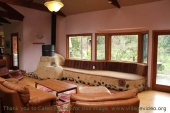













For all your Montana Masonry Heater parts (also known as) Rocket Mass heater parts.
Visit me at
dragontechrmh.com Once you go brick you will never go back!




thomas rubino wrote:Denny, are you mixing sand into your clay ? Pure clay like a potter uses would need 3 times the amount of builders sand mixed into it. Without sand your clay is not cob. It will crack without it.








For all your Montana Masonry Heater parts (also known as) Rocket Mass heater parts.
Visit me at
dragontechrmh.com Once you go brick you will never go back!




thomas rubino wrote:It should bond better. The sand thermally stabilizes the cob, keeps it from moving as it dry's/ heats. Have you acquired the builders guide yet? It explains all this.








For all your Montana Masonry Heater parts (also known as) Rocket Mass heater parts.
Visit me at
dragontechrmh.com Once you go brick you will never go back!




thomas rubino wrote:Not really a link but go to amazon and paste in this. ( The Rocket Mass Heater Builder's Guide: Complete Step-by-Step Construction, Maintenance and Troubleshooting )
 1
1




 1
1








bob day wrote:I would scrape that clay off before it dries anymore and submerge it in water and reuse it with perlite mixed in like you were casting a riser--The Perlite makes it slightly less robust, but it is a better insulator. Then use the sand clay mix for the surface. I like to use a paintbrush and water to smooth the final surface, and if minor cracks appear just use a very loose clay to fill in the cracks--
btw, cob also has straw mixed in, but I generally don't bother with straw in my stoves --makes it easier to take them apart and rework the clay with water when I remodel, and as fast as the designs are evolving, that is quite frequently.




Glenn Herbert wrote:As a potter, I can attest that clay that is bone dry will wet and break down much faster than clay that is nearly dry (not changed color yet).
As long as you don't need the cob to hold together on its own, eliminating straw would be fine. If you want to make a larger structure like a bench, straw in the outer few inches at least will make it much more crack-resistant. Clay plus perlite (as much perlite as the clay will hold without being crumbly) will be a fine insulator, and a layer of clay-sand-straw cob will give a strong tough surface. For thermal mass areas where you want to absorb heat and not prevent its movement, lots of sand in the mix is best, to add mass and reduce shrinkage.






|
Just let me do the talking. Ahem ... so ... you see ... we have this tiny ad...
The new permaculture playing cards kickstarter is now live!
https://www.kickstarter.com/projects/paulwheaton/garden-cards
|




